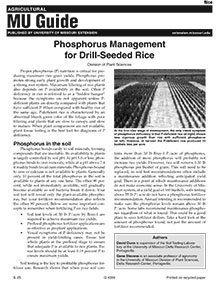Selecting Landscape Plants: Shade Trees - Page 28
Revised
Learn about white oak's adaptability, soil preferences, and growth characteristics for choosing the ideal shade tree for your landscape.
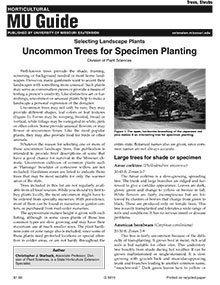
Selecting Landscape Plants: Uncommon Trees for Specimen Plantings
Reviewed
Check out some uncommon landscape trees that have a good chance for survival in the Missouri climate.
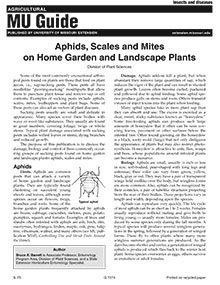
Aphids, Scales and Mites on Home Garden and Landscape Plants
Revised
Learn how to identify and control aphids, scales, and mites to protect your garden plants from damage and common pest-related issues.
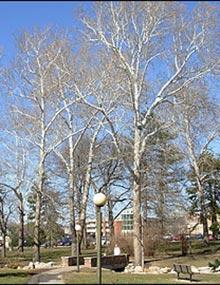
Selecting Landscape Plants: Shade Trees, Page 02
Revised
Discover the American sycamore, a fast-growing shade tree with distinctive bark, pest resistance, and adaptability to wet soil conditions.
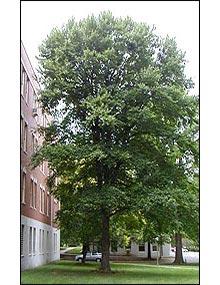
Selecting Landscape Plants: Shade Trees, Page 05
Revised
Learn about the black gum tree’s unique features, including its stunning fall color, adaptability to various landscapes, and benefits for wildlife.
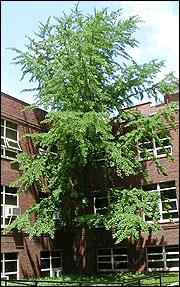
Selecting Landscape Plants: Shade Trees, Page 08
Revised
Discover the ginkgo tree (Ginkgo biloba), a resilient, medium-sized shade tree with unique fan-shaped leaves and vibrant yellow fall color.
Selecting Landscape Plants: Shade Trees - Page 11
Revised
Honey locust trees are excellent shade providers with lacy foliage and minimal leaf litter. Improved thornless, podless varieties are recommended for planting.
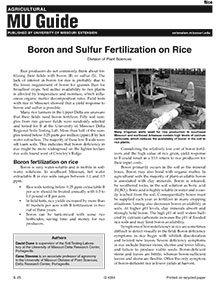
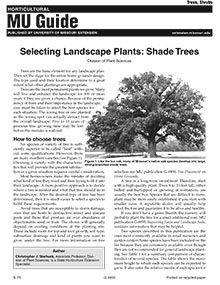
Selecting Landscape Plants: Shade Trees - Page 14
Revised
Discover the best shade trees for your landscape, including lindens with fragrant summer flowers and improved varieties like 'Greenspire' and 'Redmond'.
Selecting Landscape Plants: Shade Trees - Page 17
Revised
Discover characteristics, growth habits, and ideal conditions for various shade trees like Red Maple, offering valuable insights for your landscape planning.
Selecting Landscape Plants: Shade Trees - Page 20
Revised
Siberian elm is a fast-growing, hardy shade tree that thrives in tough conditions but can become invasive and have weak wood. Suitable for large spaces.
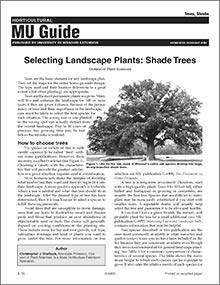
Selecting Landscape Plants: Shade Trees
Revised
Learn how to select the perfect shade trees for your Midwest yard or landscape. Don't waste years on a bad landscape!

Soybean Diseases
Revised
Editor's note
The following abstract describes a publication that is only available as a downloadable PDF.
Selecting Landscape Plants: Shade Trees - Page 23
Revised
Swamp white oak is a durable, fast-growing shade tree that thrives in wet soils. Known for its resistance to pests, it provides excellent shade and fall color.
Selecting Landscape Plants: Shade Trees - Page 26
Revised
Discover the tulip tree's features, including its height, growth habits, and ideal planting conditions for a beautiful and sustainable landscape addition.
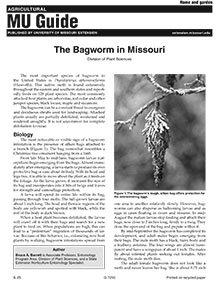
The Bagworm in Missouri
Revised

Soil Testing for Lawns
Reviewed
Soil testing helps determine nutrient levels and pH, guiding effective lawn fertilization and ensuring healthy turf growth.
Selecting Landscape Plants: Shade Trees - Page 29
Revised
Discover the unique beauty of yellowwood trees, featuring fragrant white flowers and a rounded form, ideal for diverse landscapes.
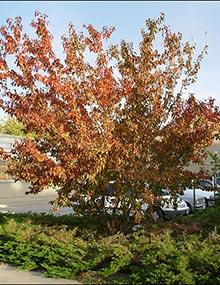
Selecting Landscape Plants: Shade Trees, Page 03
Revised
Amur maple is a versatile, small deciduous tree with vibrant fall color. It adapts well to various soils, offering resistance to pests and urban conditions.
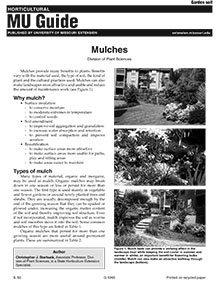
Mulches
Revised
Mulches provide many benefits to plants. Benefits vary with the material used, the type of soil, the kind of plant and the cultural practices used. Mulches also may be used to make landscapes more attractive and usable and to reduce the amount of maintenance work (Figures 1a to 1c).
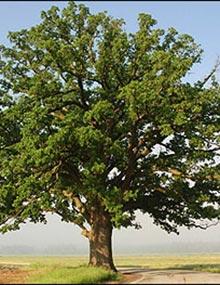
Selecting Landscape Plants: Shade Trees, Page 06
Revised
Bur oak is a hardy, slow-growing shade tree with broad leaves, deep roots, and drought tolerance, making it ideal for various landscape conditions.
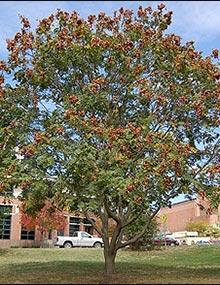
Selecting Landscape Plants: Shade Trees, Page 09
Revised
Learn about the Golden-rain tree, its ornamental value, and how it thrives in a variety of landscapes, offering both beauty and environmental benefits.
Selecting Landscape Plants: Shade Trees - Page 12
Revised
Learn about the Horse Chestnut tree, its distinctive features, growth habits, and ideal planting conditions to enhance your landscape with shade and beauty.
Selecting Landscape Plants: Shade Trees - Page 15
Revised
Norway maple is a fast-growing shade tree with broad, dense leaves. It thrives in various soil types and is commonly used in urban areas for its durability.
